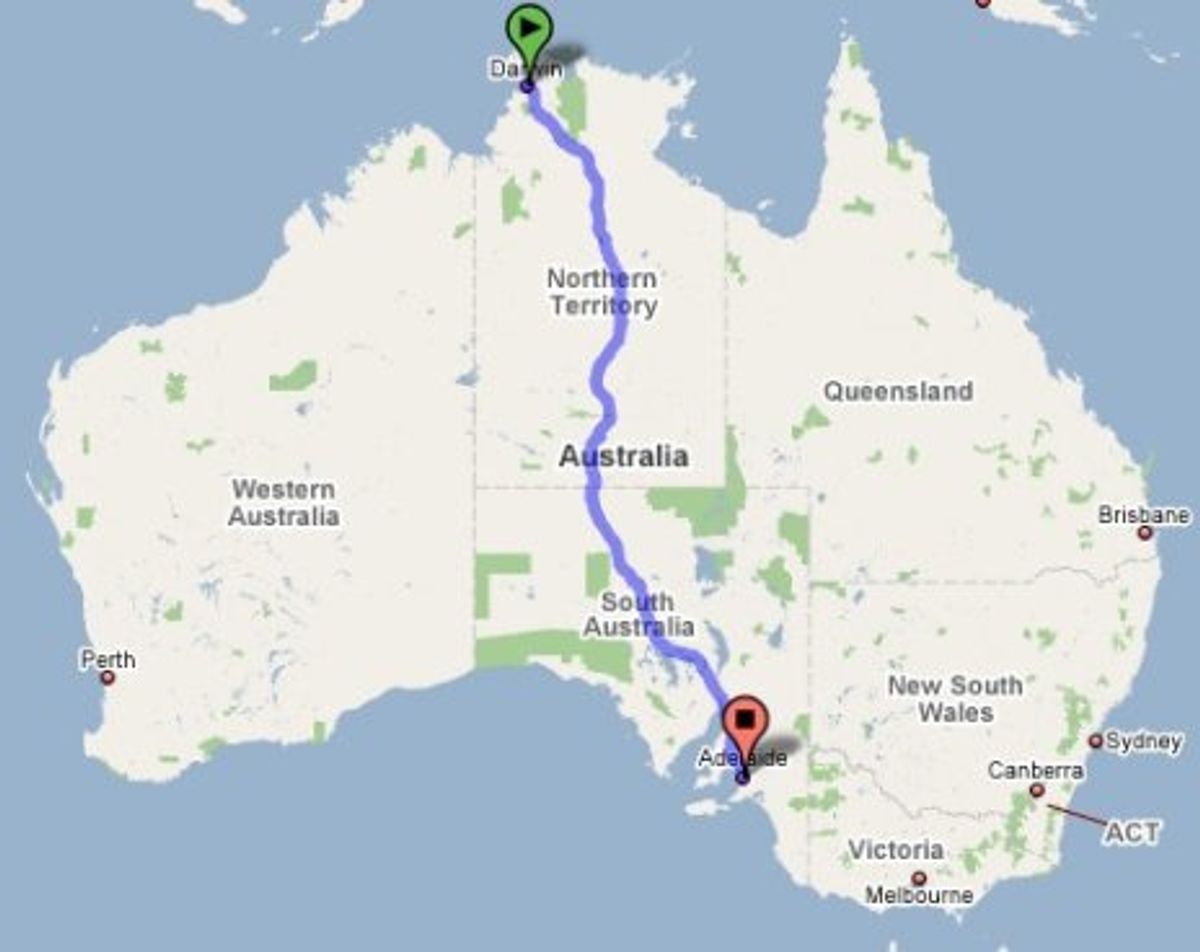Last week, a fleet of solar-powered cars raced across the Australian outback, concluding the 11th World Solar Challenge on Saturday as stragglers reached their final destination. The (probable) winner: Team Tokai, a Japanese group grabbing its second consecutive victory in the international race. The team finished ahead of 36 other cars from 21 countries, crossing the finish line on Thursday more than an hour before the second-place team.
On Monday, though, the challenge Web site revealed that one of the teams has protested those results. Since many of those involved in the race are currently returning to their own corners of the world, the official ruling will be postponed until better communication is possible.
Following the same course used since 1987, the World Solar Challenge runs 3000 kilometers (more than 1800 miles) from north to south, starting in coastal Darwin and finishing in Adelaide, the capital of South Australia. Teams drive through the day at speeds of 72 to 145 kilometers per hour (45 to 90 miles per hour) while fuel is plentiful, and camp out at night in the desert as their cars’ batteries slowly run out of power. This year, the stop-and-go race began on Sunday, taking the leading teams four days to complete.
This year’s race was unexpectedly fiery, with a number of cars sidelined as a bushfire raced across the course and two cars were caught in their own conflagration. A Filipino car caught fire early in the race near Tennant Creek as its battery exploded, and a Belgian car caught fire later in the race.
As for the political heat, there’s no word yet on who has protested the results or why. Likely protesters include the Nuon team from the Netherlands, which came in second, and the team from the University of Michigan, which came in third. This year’s top three teams have a storied history at the challenge; in 2009, they finished in the same order. The Nuon team had won four consecutive races until 2009, when Japan’s team achieved the title. Michigan has twice landed in third place, in 2005 and 2009; the team was considered a favorite in 2007 but fell far behind the competition when its car smashed into another just minutes after the start.
Past protests have revolved around the specifications prescribed by the race’s organizers. Those specs change frequently; this year, the solar panels lining the top of the cars were limited to six square meters, down from eight in 2005. Panel sizes were reduced to slow down the cars after they reached the 110 km/h speed limit on many Australian highways (in the 2005 race, MIT’s car flipped over, probably because of excessive speed). Batteries were also limited to 5kWh of stored energy.
We’ll keep you updated on specifics of the protest as they become available.



